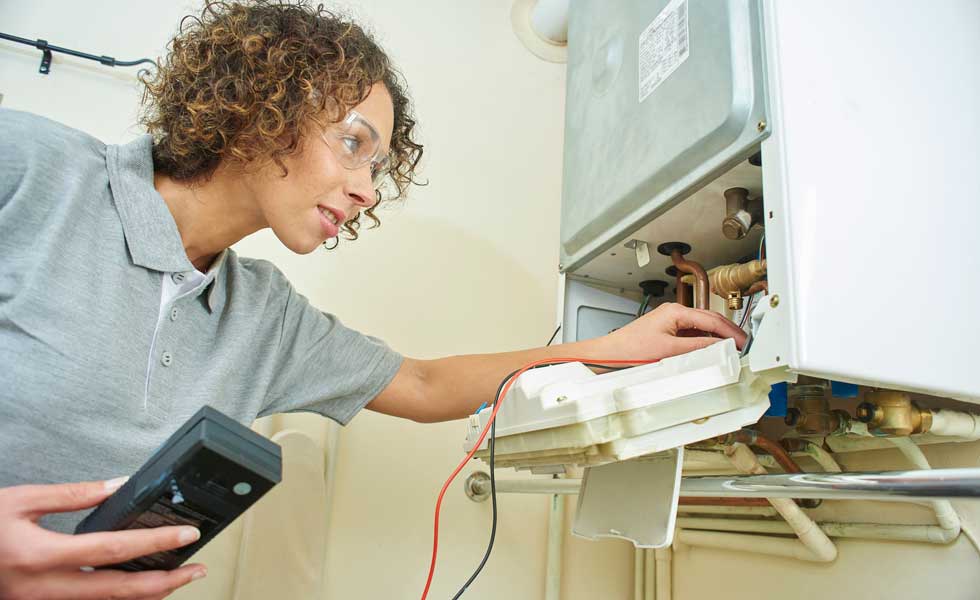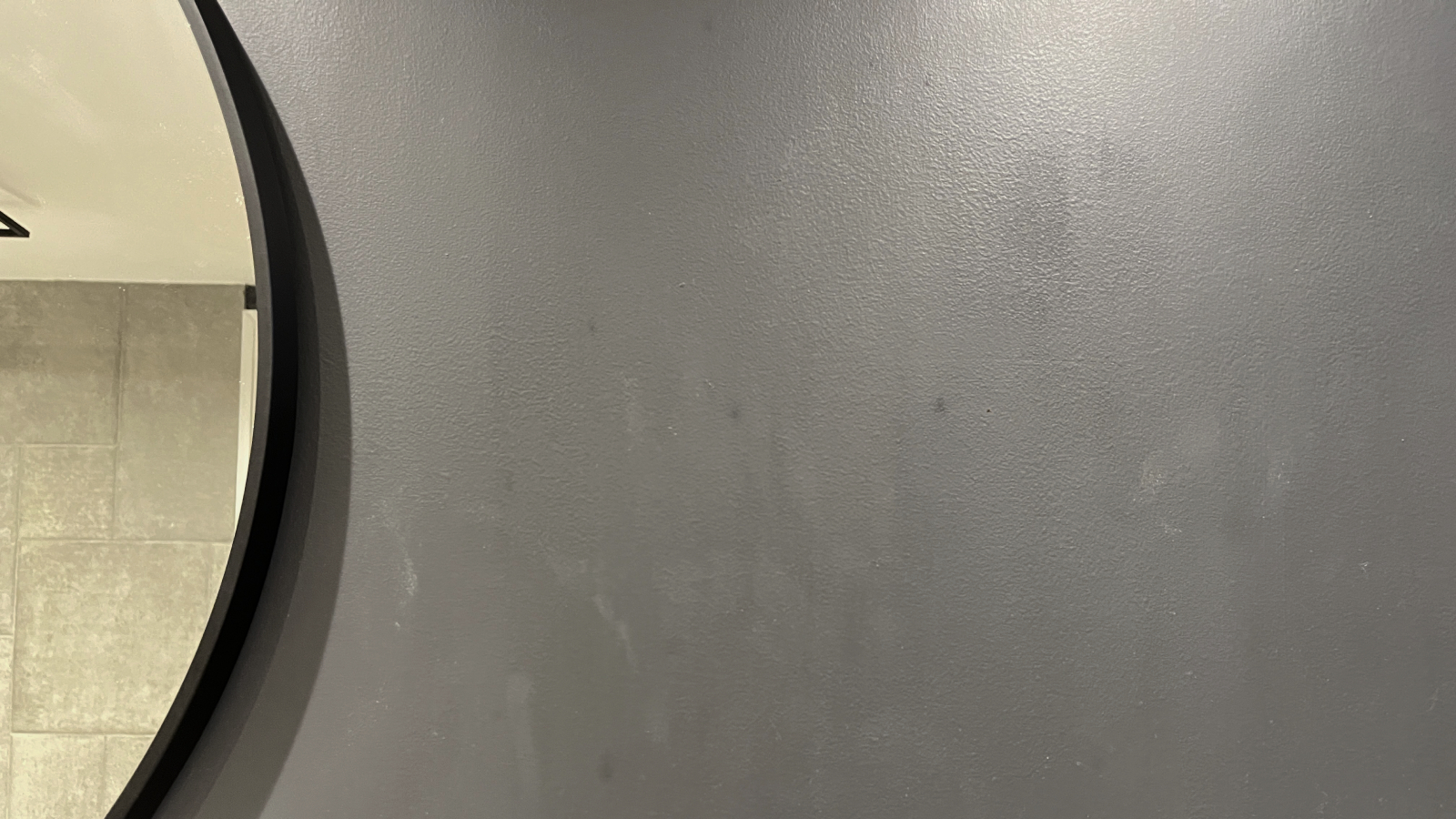Central Heating: How to Boost Efficiency
There are many solutions to an inefficient heating system. If your central heating system is sluggish, follow David Hilton’s tips on getting your system into tip-top condition

Central heating systems consist of many different parts made of many different metals (and plastics) with water circulating through them.
The different chemicals and limescale can lead to:
- corrosion
- leaks
- air ingress
- limescale and sludge build-up coating the pipes and heat exchangers.
Any of these factors can cause inefficiency or complete blockage and component failure.
Troubleshooting at a Glance
| Problem | Possible Reason | Solution |
|---|---|---|
| Poor circulation | Sludge | Power flushing |
| Discolouration of the carpet below | Leaks | Replace faulty parts and check quality of the water |
| Reddish water | Presence of iron oxide — indicating corrosion of iron materials | Flush and treat with inhibitors |
| Black particles | Probably magnetite, indicating advanced corrosion | Flush, replace faulty parts and treat with inhibitors |
| Tops of radiators stay cool or lukewarm | Air in radiators | Venting |
| Smell of rotten eggs | Hydrogen sulphide | Disinfectant before power wash |
| Leaks after power flushing | Power flushing has removed limescale that was sealing holes | Replace faulty parts and treat with inhibitors |
| Some radiators much cooler than others | Central heating system needs rebalancing | Map the pipe system and create increased resistance from the closest radiators |
Why can Central Heating Fail at the Start of the Cold Weather?
When a system is contaminated, the boiler needs to work a lot harder to heat the emitters. Any moving parts such as motorised valves may remain inactive for the summer months and the limescale then sets and the part cannot then move when the cold weather returns. This can, in some cases, overload the electronic circuit board and result in a complex repair or even complete boiler exchange.
Annual Service and Other Checks
It is important to keep your central heating system and boiler in a healthy condition and an annual service from an experienced engineer is a good start. Over and above the service, it is prudent to keep a check on the actual emitter circuits as well throughout the year.
You may notice leaks — discolouration of the carpet below the radiator is usually an indicator. You may also find that air has got into the system. In both cases, take note of any tell-tale signs:
- Reddish water indicates that iron oxide is present and suggests active corrosion of iron materials
- Black particles are likely to be magnetite, which will indicate advanced corrosion
Venting your Central Heating System
Hydrogen sulphide and hydrogen are both flammable gases. As such, if they get vented into a combustion circuit or boiler housing they could be ignited by the boiler’s burner or ignition mechanism.
If the tops of the radiators do not get warm then they probably have air in them and need bleeding. It is, however, important to note if any smells are present when you bleed the radiators, which could indicate hydrogen sulphide or hydrogen:
Bring your dream home to life with expert advice, how to guides and design inspiration. Sign up for our newsletter and get two free tickets to a Homebuilding & Renovating Show near you.
- Hydrogen sulphide is a toxic gas that is produced by bacteriological activity. It is very rare and has a fairly unmistakable smell of rotten eggs
- Hydrogen is produced by corrosion and can be found in new systems as well as old. New pipes may have been joined using too much flux or have dissimilar metals and because there is ionic content in the water there may be a galvanic reaction which causes the copper to plate out
If a central heating system is suffering from any type of corrosion it is best to clean the system, determine and remedy the cause of the corrosion, and then protect the system from any further corrosion.
What is a Central Heating Power Flush?
Power flushing is the most effective way of cleaning the system and should resolve poor circulation caused by sludge. It’s not a DIY procedure and can cost a few hundred pounds.
The right kind of cleaner must also be used according to the type of dirt that may be present. A new system will use a ‘new system’ cleaner as the dirt is probably installation debris. On systems older than six months, either a fast-acting cleaner is used with a power flushing unit, or a regular cleaner is used for more soiled systems where the cleaner is left in the system for a number of weeks.
Any system that has narrow bore pipes or non-barrier plastic pipes may be more difficult to power flush and, because non-barrier pipes allow oxygen to enter the system, there will usually be more severe corrosion present and a more regular flush may be required.
Before the cleaning can begin, the system components must be checked to make sure that they will withstand the procedure and pinholes won’t be left in the radiators once the corrosion debris has been removed. If there is any doubt then replace the components. Power flushing, as well as the replacement of the water (especially if it is softened water), could also open leaks that had previously been sealed with limescale. Be prepared.
If hydrogen or hydrogen sulphide is identified then an engineer may choose not to immediately power flush but use a chemical cleaner (or disinfectant in the case of hydrogen sulphide) instead. This will need to be circulated in the system for at least 24 hours before the flush.
Once the system is clean and completely purged of air you will need to add corrosion inhibitor to the water.
Do not add inhibitor to a system that already has inhibitor in it,
as they may not be the same and may not be compatible with each other.
It may also be a good idea to get the engineer to add a filter to collect particles and contaminants that may still be present or that may be added afterwards.
Rebalancing your Central Heating System
The central heating system may also need to be rebalanced. Balancing is the method of ensuring that an equal amount of heat goes to each radiator. As water usually travels the path of least resistance, you will find that the closest radiator to the boiler will get the hottest and the furthest one may get no heat at all.
The engineer will need to map the pipe system and then create flow resistance through the closest radiator to force the water flow to the next radiator. Using a differential thermometer, they will then set the same temperature difference across each flow and return pipe on the radiators.
The resistance is set using the lockshield, which is the valve on the opposite side of the radiator from the thermostatic valve. Once set, do not tamper with the lockshield as it will upset the system balance.
David is a renewables and ventilation installer, with over 35 years experience, and is a long-standing contributor to Homebuilding and Renovating magazine. He is a member of the Gas Safe Register, has a Masters degree in Sustainable Architecture, and is an authority in sustainable building and energy efficiency, with extensive knowledge in building fabrics, heat recovery ventilation, renewables, and also conventional heating systems. He is also a speaker at the Homebuilding & Renovating Show.
Passionate about healthy, efficient homes, he is director of Heat and Energy Ltd. He works with architects, builders, self builders and renovators, and designs and project manages the installation of ventilation and heating systems to achieve the most energy efficient and cost effective outcome for every home.

